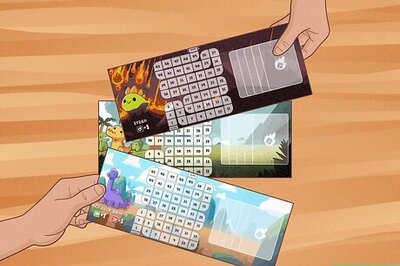
views
Modern day toilets have two flush buttons, a small and large button. This feature makes these toilets unique but what is the reason behind it? According to reports, the large button is there to flush out solid waste and uses 6-9 litres of water. The small button flushes out liquid waste and uses 3 to 4.5 litres of water. The arrangement of buttons has been made with the objective of water conservation.
Advantages and disadvantages
Both buttons are connected to their exit valves. Dual Flushing fulfils the purpose of water conservation by saving up to 20,000 litres of water. Dual flushes are also eco-friendly. The disadvantage of dual flushes is that they cost more than single flushes.
Talking about other disadvantages, dual flushing toilets are more prone to leaks. Due to these leaks, dual flush toilets waste more water in comparison to the amount they save. According to many reports, the majority of Dual flush toilets use a drop valve system. This drop valve system is at the bottom of the cistern.
It allows water to flow out when the flush is pressed. Debris and other issues cause the failure of this mechanism to close. This failure means that water continuously flows from the cistern and into the bowl. It eventually results in the wastage of water.
Brainchild between Dual flushes
American industrial designer Victor Papanek developed the idea of dual flushes in his book Design For the Real World in 1976. The concept of Dual Flushes was first implemented in Australia in the year 1980. Design For the Real World is the preferred book when it comes to studying design.
This book has been translated into 23 languages. Victor also developed the idea of rejecting futile product manufacturing. Victor’s ideas were much ahead of time. He emphasised the need for sustainable and responsible planning. In a world, challenged by resources and energy scarcity, his ideas are revolutionary.
Read all the Latest Lifestyle News here


















Comments
0 comment